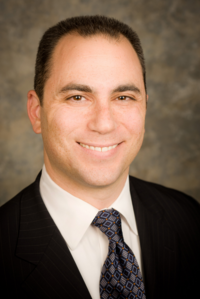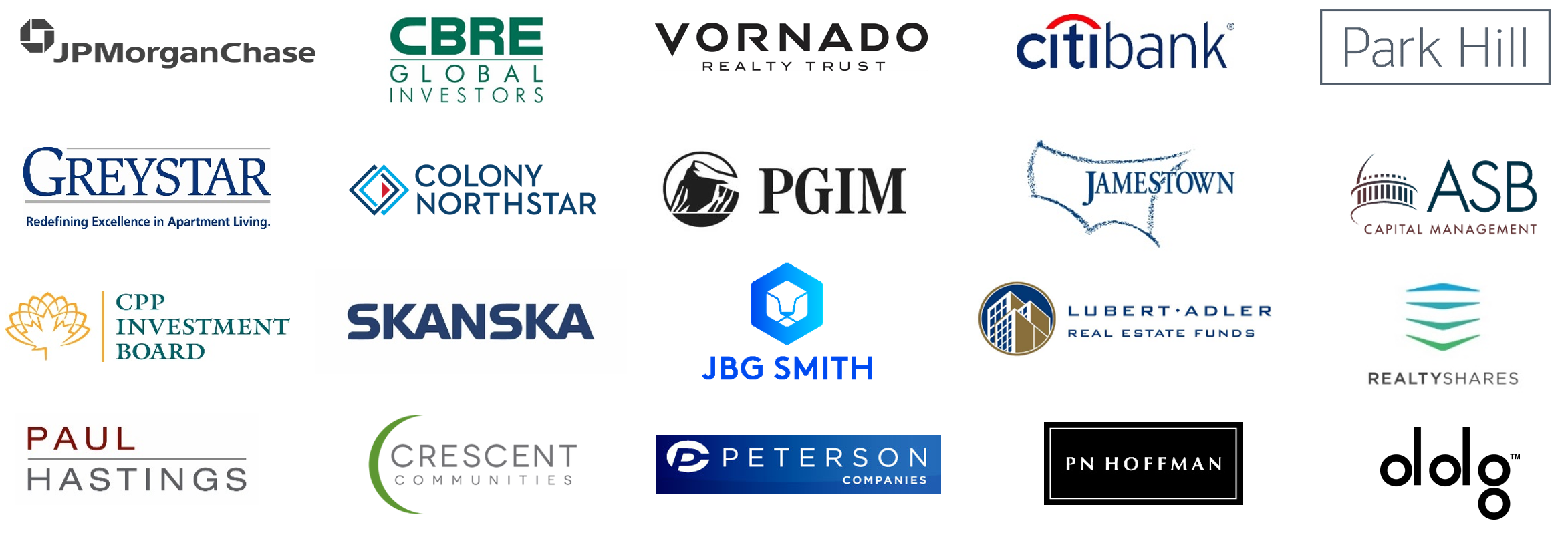Back by popular demand, this 2-day intensive training course provides you with foundations and a wide array of financial modeling skills specific to development and acquisition transaction analysis and equity returns analysis.
Included with your registration are:
Permanent access to easily navigated Level 1-3 Bootcamp Video Tutorials worth $399!
Accompanying unlocked Excel files, compatible with both PC and Mac
All the knowledge needed to attain REFM’s three Certifications
A bonus job interview test Excel Solution Set and 1-page investment memo
Why train with REFM?
- Time-tested training content second to none in terms of refinement, depth and breadth
- Efficient, student-focused teaching and learning format
- Potential to achieve the most highly-regarded Excel skills Certification in the business
REFM is the trainer to these organizations:
When and Where
Saturday 10/20/18 – 8:30 AM to 5:00 PM Eastern and
Sunday 10/21/18 – 8:30 AM to 5:00 PM Eastern
In-Person in Midtown Manhattan: 275 Madison Avenue #1201, New York, NY 10016 (NOTE: Building entrance is on E. 40th Street east of Madison)
Or Online (live streaming, not recorded): Online participants are able to ask questions in real time via chat or audio link
Course Format and Participant Computer Requirements
- lecture with real-time Q&A
- heavy hands-on Excel exercises
- attendees must provide their own computer with Excel 2007 or more recent for PC, or Excel 2010 or more recent for Mac
Day 1 Agenda: Foundations and Real Estate Development Modeling
8:30 AM to 12:30 PM
Real Estate Analysis Excel Toolkit
50% Lecture | 50% Hands-On Exercises
In this 4-hour session, you will learn the top 25+ Excel functions, tools and techniques that are most used in real estate analysis.
Topics covered include:
- basic formula writing
- relative vs. absolute references
- dates
- advanced use of conditional statements
- financial functions
- mortgage amortization schedule
- projection formula writing
- formula auditing with trace dependents/precedents
- data table lookup functions
- data tables for sensitivity analysis
- backsolving for maximum loan amount
- quality control checks
- debugging errors
- pivot tables
- goal seek
- basic macros
- circular references
- best practices
- keyboard shortcuts
Excel techniques and functions taught include:
- formula writing using the equals sign
- cell anchoring using dollar signs
- EOMONTH, EDATE
- IF, AND, OR, and combinations thereof
- COUNTIF, COUNTIFS
- SUMIF, SUMIFS
- VLOOKUP
- HLOOKUP
- ROW, ROWS
- COLUMN, COLUMNS
- INDEX, MATCH
- IFERROR
- RATE
- PV, FV
- NPV, XNPV
- IRR and XIRR
- PMT, PPMT, IPMT
- CUMPRINC, CUMIPMT
12:30 PM to 1:00 PM Lunch Break
1:00 PM to 5:00 PM
Mixed-Use Apartment/Multi-family Building Development Modeling
40% Lecture | 60% Hands-On Exercises
In this 4-hour session, you will learn the collection of technical skills for the pro-forma (projection) modeling for the ground-up development, operation and sale of a mixed-use rental apartment building with ground-floor retail and income-producing parking.
To facilitate your learning, you will begin with pre-formatted tabs for lot and building information for a subject development site, apartment unit mix, and capital structure.
With transaction base case assumptions provided for you, you will then derive and fill in line item projection formulas on a standard, pre-formatted monthly sources and uses of funds tab. Next, you will derive and fill in line item projection formulas on a standard, pre-formatted monthly cash flow tab. You will wire the tabs together as applicable. When you have completed all of the hands-on modeling, you will have a fully-working 6-tab model that ends at pre-income tax cash flow to equity.
Instructor support is provided, and an unlocked solution set is included so that you can check your work along the way.
The advanced capital structure you will model includes:
- sponsor
- equity partner
- third party investor
- mezzanine loan
- senior construction loan.
Topics covered include:
- site and building information
- apartment unit mix details
- pre-, during- and post-construction project timing elements
- transaction capital structure
- dynamic formula writing involving conditional statements
- residual land valuation
- uses of funds: land and acquisition costs, hard costs, soft costs, FF&E costs, financing costs
- sources of funds: equity, debt
- cash flows and returns: residential, parking, retail
- capitalized valuation for sale
- project-level returns analysis and goal-seeking.
.
Day 2 Agenda: Partnerships and Acquisition Analysis
8:30 AM to 12:30 PM
Single Transaction Equity Joint Venture Partnership and Waterfall Modeling (Certification Level 3) Bootcamp
50% Lecture | 50% Hands-On Exercises
Applicable real estate transaction types: all income-producing and all unit-sales based
In this 4-hour session, you will learn about how to model equity joint venture partnerships for individual property transactions, both developments and acquisitions. “Dollars in” (capital contributions) and “dollars out” (partitioned levered cash flows) to all equity players will be studied in detail.
Topics covered include:
- rationale behind targeting disproportionate returns to the sponsor
- how to achieve disproportionate returns through fees and cash flow partitioning
- preferred return overview
- preferred return variations with respect to priority of payment
- preferred return in context (Payment types A, B and C)
- nature of preferred return (Non-compounded and compounded, non-cumulative and cumulative)
- waterfall distribution overview
- promote (carried interest) mechanism overview and modeling
- look-back internal rate of return (IRR) method
- 3-Tier waterfall modeling
- double-promote, 5-tier waterfall modeling
- alternate compounding periods: monthly, daily, quarterly
- sample partnership structures.
12:30 PM to 1:00 PM Lunch Break
1:00 PM to 5:00 PM
Office Property Operating Projection and Acquisition Screening Analysis Modeling
40% Lecture | 60% Hands-On Exercises
In this 4-hour session, you will learn the industry-standard P&L (profit and loss) statement line item set-up structure for office properties.
Part 1
First, you will first learn the generic 20-line item set-up for an existing operating commercial office property, starting at Base Rental Revenue (Gross Potential Rent) and ending at Before-Tax Levered Cash Flow (cash flow to equity). Next, the assumptions for projection modeling exercise are explained.
There are three Suites in the property. The assumptions to be used are that leases for Suites 100 and 200 were put in place at the start of the trailing twelve months, and that Suite 300 is vacant currently and will remain vacant through the end of Year 1. Suite 300 rent will commence at the start of Year 2 with a Year 2 Base Year.
Suite 100 is a triple-net (NNN) lease, and Suites 200 and 300 are Gross leases (Base Year stop).
The following assumptions inputs are provided for you to key into the Exercise tab.
- Property-level Base Year (BY) operating expenses, real estate taxes and utilities PSF
- Base Year rents for all three suites
- general vacancy and credit loss
- Annual growth rates for rents for all three suites
- % of reimbursable and non-reimbursable expenses that are fixed
- Annual growth rates for:
- parking and miscellaneous revenuereimbursable expenses
- real estate taxes
- non-reimbursable expenses
- capital reserves
- Management fees as a % of EGR
- Tenant Improvements and Leasing Commissions PSF for Suite 300
Projection formula mathematical descriptions are provided to guide your Excel formula construction.
Part 2
The second part of the lesson takes the NOI line from the Part 1 Solution set tab, and weaves it into an acquisition analysis screening tab that integrates purchase, sale, debt and equity elements.
The sections of this analysis are:
- Uses of Funds
- Sources of Funds
- Sponsor equity
- Third Party Investor equity
- Senior Acquisition Loan (2 options will be modeled, one with a delayed draw for capital costs)
- Unlevered Projection Analysis
- Debt Schedule
- Levered Cash Flow
- Sensitivity Tables
- Levered Summary
Data tables are used to provide a spectrum of outcome possibilities given simultaneous changes in two key inputs. A levered summary table is also provided to evaluate returns for multiple hold durations side-by-side.
.
Who Should Attend This Course
Beginner-, intermediate- and advanced-level professionals and students.
Registration includes one completely free re-take of the class in the future.
Course Materials Included, instantly accessible upon registration
Fully-unlocked, annotated Excel files, compatible with both PC and Mac
PDF of the 60-slide presentation for the Level 3 Bootcamp
Online lifetime access to to REFM Level 1-3 Bootcamps, playable on any device, a $399 value
** SPECIAL BONUS **
Job Interview Technical Modeling Tests and Solution Sets
Case study: development of a hypothetical mixed-use (multifamily and retail) property that includes/excludes a refinance and equity joint venture partnership cash flow waterfall with a sponsor IRR catch-up. Assumptions are provided. Build out a 7-year annual projection model down through partner-level returns.
Answer the questions:
1. What is the going-in cap rate for this transaction in Elapsed Year 5?
2. What is the Elapsed Year 5 cash-on-cash return?
3. Assuming a project annual discount rate of 15%, does the project create value according to the NPV calculation on an Unlevered basis? On a Levered basis?
4. What is the Debt Service Coverage ratio of the Permanent Loan in Elapsed Year 5?
5. What is the total profit to the Sponsor?
Solution set provided is a 100% unlocked, 150-line dynamic Excel model with annotations, and includes a 1-page investment committee-style write-up.
Instructor – Bruce Kirsch

Mr. Kirsch began his real estate career at CB Richard Ellis, where he marketed high-rise New York City office buildings for re-development in the top-producing Midtown Manhattan Investment Properties Institutional Group. After CBRE, Kirsch worked for a developer of urban infill residential lofts. Mr. Kirsch then engaged in his own urban and suburban condominium and single family detached housing ventures. Mr. Kirsch was then selected as one of the two executives to run New York City-based developer The Clarett Group’s Washington, DC business.
Mr. Kirsch holds an MBA in Real Estate from The Wharton School. Mr. Kirsch is also the co-author of the Fifth Edition of the leading real estate finance and investments textbook, Real Estate Finance and Investments: Risks and Opportunities, along with Dr. Peter Linneman, the founding chairman of The Wharton School’s Real Estate Department. Mr. Kirsch graduated with a BA in Communication from Stanford University.
.
Technical Specifications for Online Attendance
Online attendance uses the GoToMeeting platform. If you intend to participate using your computer speakers (instead of calling into the conference call bridge), please test your speakers and microphone before the course start time so that you are sure they will work.
Here is what to expect in terms of a user interface if you are participating online.
For an ideal experience, attend from a quiet, distraction-free setting that will allow you to have 2 screens up at once so you can have your Excel application up on one and the course broadcast up on another.





